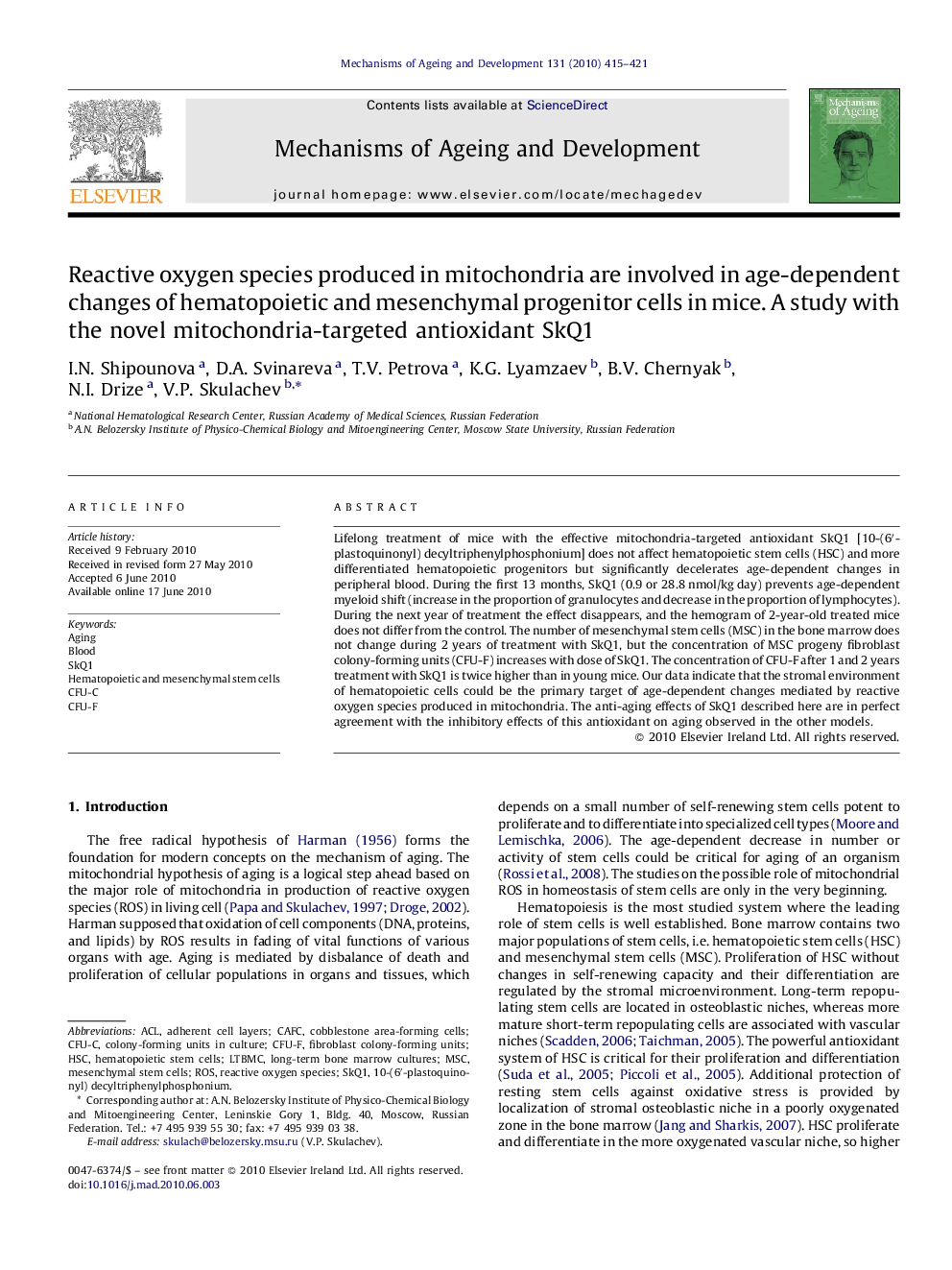| Article ID | Journal | Published Year | Pages | File Type |
|---|---|---|---|---|
| 1919491 | Mechanisms of Ageing and Development | 2010 | 7 Pages |
Lifelong treatment of mice with the effective mitochondria-targeted antioxidant SkQ1 [10-(6′-plastoquinonyl) decyltriphenylphosphonium] does not affect hematopoietic stem cells (HSC) and more differentiated hematopoietic progenitors but significantly decelerates age-dependent changes in peripheral blood. During the first 13 months, SkQ1 (0.9 or 28.8 nmol/kg day) prevents age-dependent myeloid shift (increase in the proportion of granulocytes and decrease in the proportion of lymphocytes). During the next year of treatment the effect disappears, and the hemogram of 2-year-old treated mice does not differ from the control. The number of mesenchymal stem cells (MSC) in the bone marrow does not change during 2 years of treatment with SkQ1, but the concentration of MSC progeny fibroblast colony-forming units (CFU-F) increases with dose of SkQ1. The concentration of CFU-F after 1 and 2 years treatment with SkQ1 is twice higher than in young mice. Our data indicate that the stromal environment of hematopoietic cells could be the primary target of age-dependent changes mediated by reactive oxygen species produced in mitochondria. The anti-aging effects of SkQ1 described here are in perfect agreement with the inhibitory effects of this antioxidant on aging observed in the other models.
